BuzzSumo’s free trial is available for 30 full days. That’s four weeks of test-driving the world’s largest index of social engagement data. Lucky you!
Everything you see below is available in the trial – we don’t hold back any core features!
During your trial, you’ll have access to our Suite plan – find out more about that via our plans and pricing.
Now that you’ve got access, figure out how to use BuzzSumo and make the absolute most of those 30 days.
We’ve put together a 15-step guide to help you along the way.
Just select the action you want to complete in the contents, and when you’re finished reading, click “Back to contents” to scroll back up.
Contents
What is BuzzSumo?
BuzzSumo is a tool that helps you analyze content engagement, track trends, and spot outreach opportunities across social and search.
Use it to find new content ideas, customer questions, and journalist contacts, all while monitoring what’s most important to your brand.
How do you use BuzzSumo?
How you use BuzzSumo depends on what you want to achieve, but there are four key areas to BuzzSumo: Content Discovery, Content Research, Media Monitoring and Influencer Research. BuzzSumo can be used to:
- Find new and evergreen content ideas
- Develop PR campaign ideas
- Research and outreach to journalists
- Analyze your own content, links, and engagement
- Carry out crisis management
- Build your content strategy
- Analyze competitors
- Undertake newsjacking
- Monitor mentions and create media coverage reports
- Track trending content
…And more. To get a better insight of how to use BuzzSumo, read on…

1. Find new media & publicity opportunities
Monitoring is one of our most used features. It’s crucial for measuring PR, so it’s super important you make the most of it while it’s free!
Scan blogs, news sites, forums and other online communities across the web, to see what’s being said and read about your brand online.
This tool is so powerful, it helped us create a reactive PR strategy which led to our highest free trial conversion rate ever.
You can read about that here: How two types of PR boosted our free trials by up to 108%
In short, Monitoring helps you find quick-win media opportunities, avert brand crises, and get ahead of your market.
Sound good?
See how it works and get some ideas
Simply head to Monitoring and click on the ‘Plus’. Here you can create an alert for your brand, and everything relating to it.
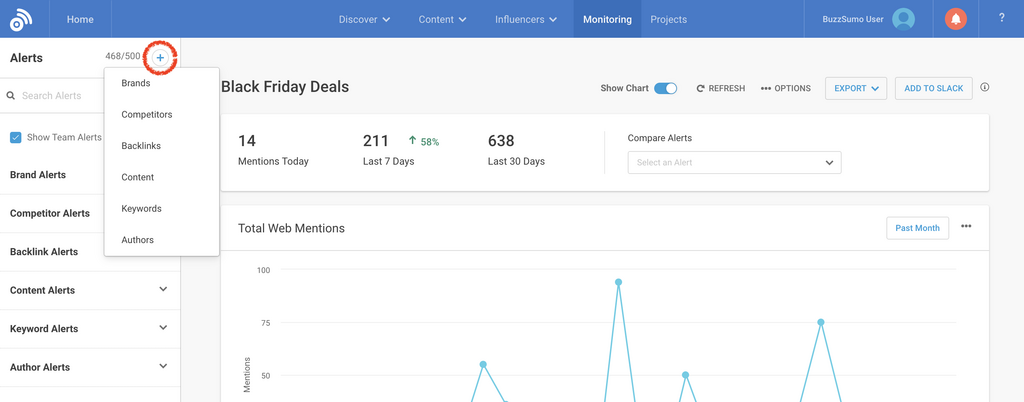
Track your brand name
- Monitor brand reputation and handle publicity – good or bad. Being the first to know about a negative issue surrounding your brand can help you do some first-rate fire-fighting, and being the first to share some good news can make you very popular indeed!
- Build relationships with the people that mention or link to you (a thank you can go a long way and result in future links and mentions!)
- See what your customers like (or don’t like) about your brand.
Pro Tip
Share a name with something / someone else?
Add in positive & negative keywords, limit certain domains, or make your alert case sensitive.
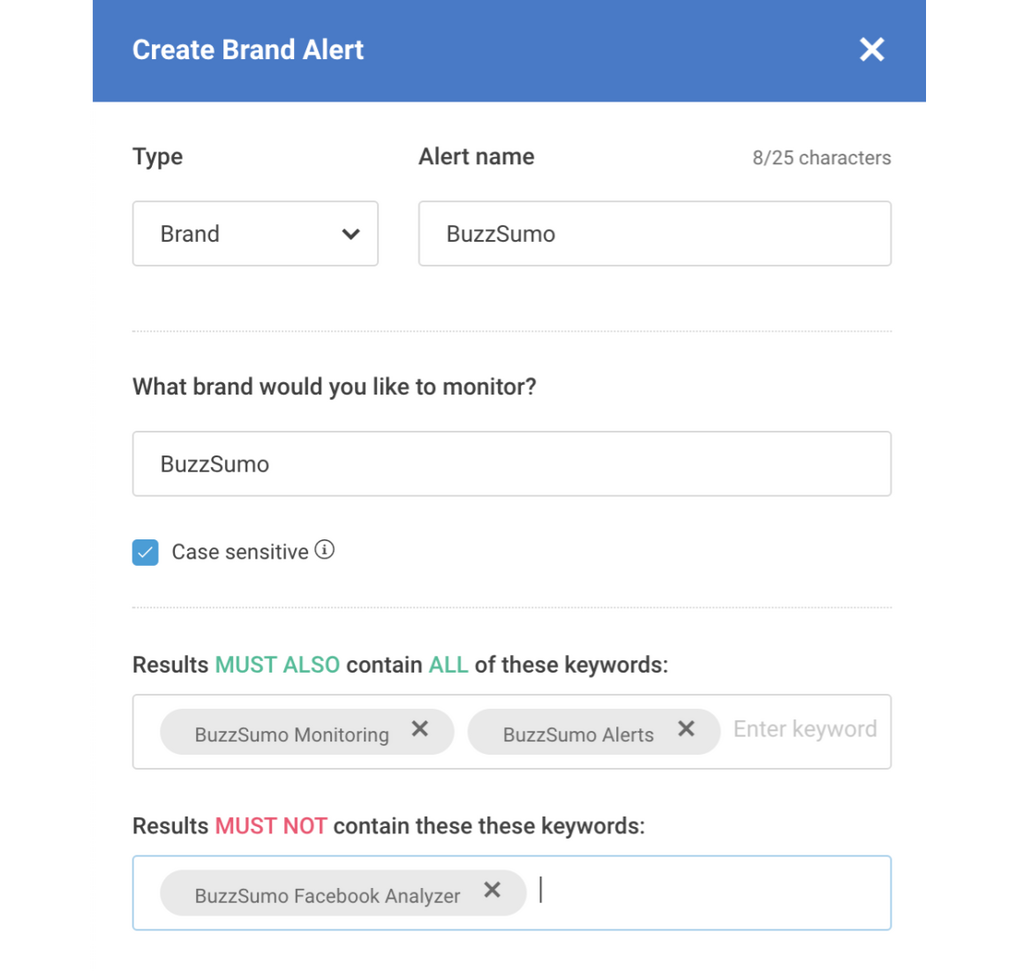
Track your competitors’ brand
- What is being published about them? Is it positive or negative? How will this affect your brand? Can this present a unique opportunity for you? – ie. if you get notified that your competitor has ceased production of a certain product, but you still offer it, can you focus your marketing efforts to win over their customers?
- Are there any link relationships between journalists and your competitors that you can intercept?
Track backlinks to a specific piece of content
- Add in a URL, and track all backlinks pointing towards it
- Who’s referring back to your content?
- Can you work with them in future campaigns to boost awareness of your brand?
Track content published by a website
- Think of a competitor, partner or inspirational leader in your industry. Set up an alert for their domain, and track the content you admire most.
- What are they doing right? Set an engagement threshold and get alerted to the pieces of content that surpass it.
- Is there anything that you could chime in on? How can you participate in the conversation here?
PR Tip 🚨: When you’re working on a seeding list/prospect list don’t rely on one way to find journalists, mix it up, here are a few of my fave: @BuzzSumo – look at similar campaigns and topics to your story @ahrefs – drop in competitor campaigns
— Will Hobson (@WillHobson) October 5, 2020
Track your business’ keywords and content
- Does your business use specific “Lingo”? Track it to see if there’s been an uptick in brand awareness and recognition.
- Monitor your brands’ features, products, stakeholders, unique concepts and anything else you can think of that might be a talking point!
- Discover novel uses for your product or service, and feed back preferences to teams across your business – ie. R&D.
- Get the Customer team involved! Set up alerts for interests, FAQs and common problems that your customers face throughout their journey.
- Focusing on the bottom of the funnel this quarter? Track mentions for ‘Your competitor + alternatives’, ‘Your brand + reviews’ or any other topic that signals purchase intent. With these mentions you can request links, build relationships with publishers and gather important customer information to take back to your team. Pretty nifty way to raise your own profile at work 😉
- Set up an alert about a future content topic or campaign, to build connections with those who are already interested. Could they share your content? Provide you with a quote? Link back to you? There are so many opportunities here!
Track journalists across your industry
- Personalize your journalist outreach by keeping up to date with their latest activity. Journalists are moving around more than ever right now, so having an alert set up on them will give you intel on where they’re writing and whether their inboxes are open.
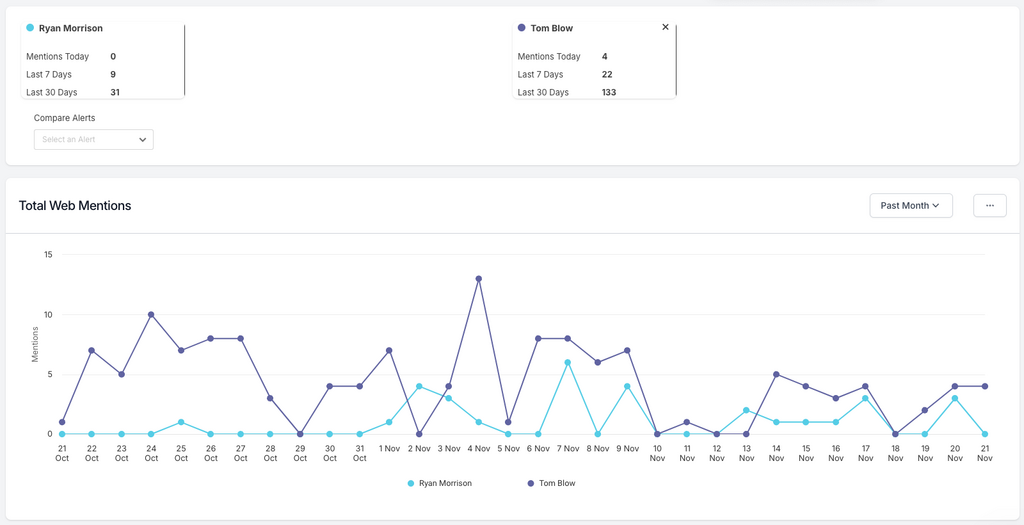
Pro Tip
Compare journalist publishing cadences
There’s nothing worse than bounce-backs on your carefully crafted pitches.
Make sure a journalist is active at the point of pitching.
Benchmark journalists based on their output with journalist alerts, and prioritize pitching the ones that publish consistently.
Back to contents ⬆️ 📖
2. Find writers and journalists in the Media Database
Discover and research top-tier journalists using BuzzSumo’s Media Database during your free trial.
We’ve given you access to 160K human-verified journalists, plus half a million more – that’s 700K journalists and counting.
While on your trial, you’ll be able to view a journalist’s:
- Name
- Average engagement
- Publication tier (The average domain authority of the publications they write for)
- Regular beats/topics
- X bio
- X followers
- Location
- Most recent articles
- Most popular articles
Then, if you choose to upgrade after 30 days, we’ll give you unrestricted access to their contact details and social profiles.
BuzzSumo’s Media Database
While other Media Databases tag-on journalist insights, we realized a long time ago that it’s not just about the contact – it’s about the content.
Luckily, we’ve been building BuzzSumo around journalist and author content since 2014.
That means you can get a 360 degree understanding of a journalist – from what makes them tick, to what gives them the ick.
Here are just a few ways you can use the Media Database…
Find your most relevant journalists, by searching their beat and sorting by recency

Create an alert for your focus journalists so you can get to know their writing

Save a journalist to a Media List in BuzzSumo
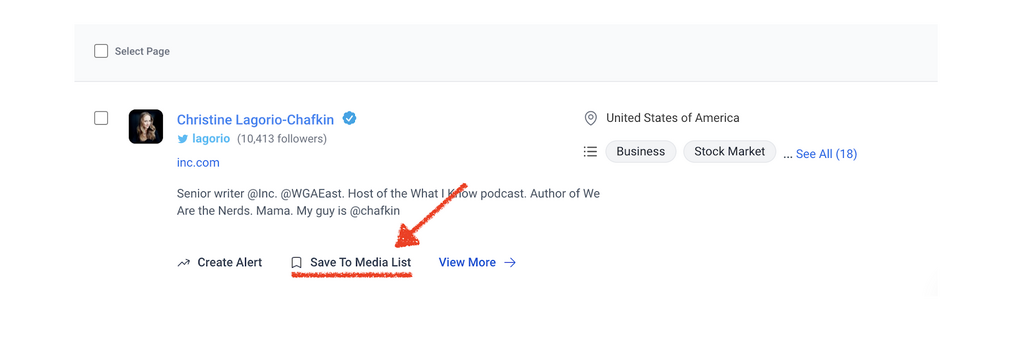
Create a new Media List, or add to one you prepared earlier
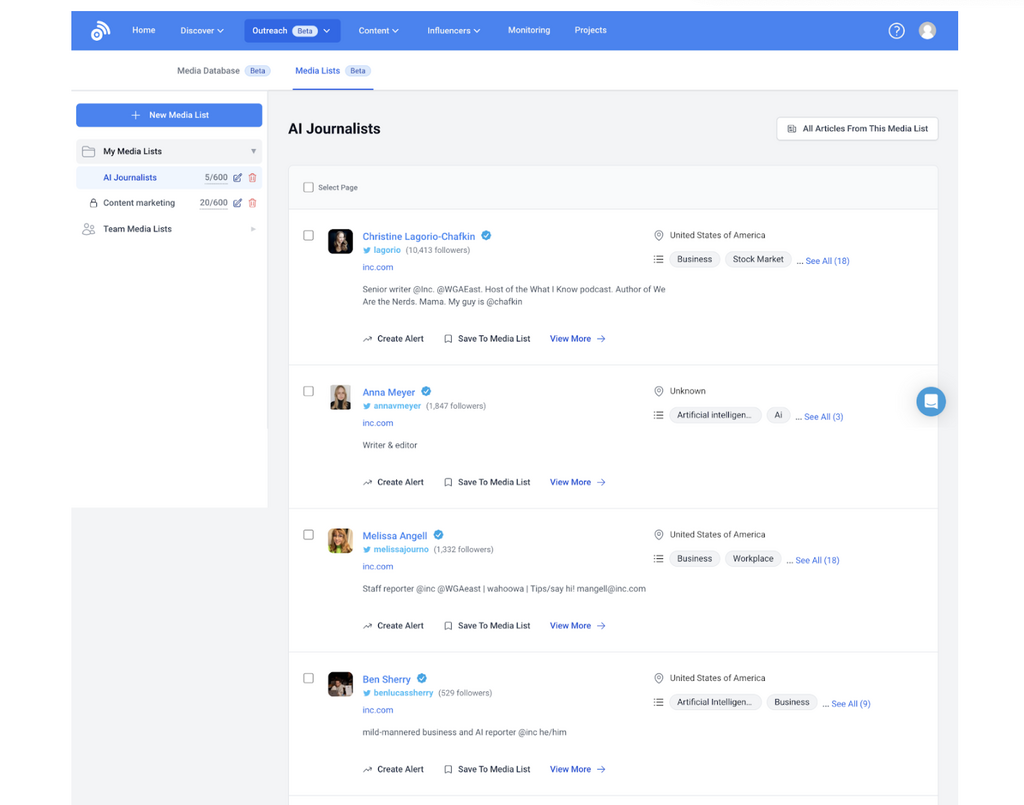
3. Build out your Media List and prepare to outreach
During your free trial, you’ll be able to build unlimited Media Lists.
That means, if you decide to upgrade after the 30 days, you’ll have all your favorite journalists ready to either export or pitch to in BuzzSumo Pitches.
In your 30 days, you can add up to 20 journalists per Media List.
And don’t forget to add notes to journalist profiles, so that you can remember why you added them when you do get around to pitching.
Premium feature sneak peek 👀
If you upgrade to a paid plan, you also get access to journalist “Recommendations” in your Media List.
Hitting this button will give you a bunch of journalists related to the ones in your Media List – think of it like the “People you might know” suggestions you get on social media.
Add notes to your Media List & explore recommendations
4. Turn media mentions into links
Arguably the most instant way to find opportunity in BuzzSumo, the Linked dropdown in Monitoring lets you sort by the Mentions Without Links – ie. the ones that aren’t yet driving traffic to your website.
This link-building tactic is the perfect starting point for channeling authority to your article, page, or overall domain.

In our study of journalists and pitching, we found that 77% of brand mentions go unlinked.
That is a lot of traffic being left on the table.
Requesting links back to your brand from existing mentions is a crucial link building technique that shouldn’t be overlooked in any outreach strategy.
When you’re outreaching to the author to request a link, make sure you thank them for the mention, and move on to stress the reader benefits of accessing your new link (ie. up-to-date prices, new product information, downloadable assets, targeted discounts etc.).
Pro Tip
Try searching unlinked competitor mentions
Can you get the jump on your competitor by pitching to the authors who have mentioned them, but not gone so far as to add a link? Maybe you have something new and better to offer, that they’d be much more likely to reference? 👀
Prioritize high domain authority
For a quick SEO win, focus on getting linked mentions from content with the highest Domain Authority.
5. Manage your brand’s reputation & avert crises
A lot can happen in 30 days. OpenAI’s decision to fire Sam Altman and Greg Brockman led to:
- 740 of 770 employees threatening to resign
- 15K+ headlines, with 335K+ engagements
- 11K negative sentiment posts on X
And that unfurled in less than four days.
Time is very much of the essence when it comes to brand reputation management, and 30 days is definitely more than enough time to minimize the fallout of an ill-judged decision.



